12 Wild Animals in Mongolia [Wildlife in Mongolia]
Want to know more about the wildlife in Mongolia?
Discover 12 wild animals in Mongolia in this post, as well as interesting facts about them. 🇲🇳
Learn All About Mongolian Animals
Ready to learn all about Mongolian animals?
I’ve always been fascinated by animals, and by how they can be so different from one country to another. In this guide, we’ll focus on the many animals Mongolia has on the land, in the sky, and underwater.
I’ve split the guide into 6 categories:
- Native animals from Mongolia
- Endangered animals of Mongolia
- What is the Mongolian national animal?
- How many animals native to Mongolia?
- Why are there no deer in Mongolia?
- Are there pandas in Mongolia?
Let’s dive in right away with our first category!
Native Animals from Mongolia
Mongolia is a large landlocked Asian country located in the eastern part of the continent, between Russia and China. It is the world’s largest landlocked country that does not have access to a closed sea, was home to Gengis Khan and the Mongolian Empire (the largest contiguous land empire in history), and it used to be a Chinese colony. It is bordered by Russia and China, its capital and largest city is Ulaanbaatar, which counts more than 1,466,000 inhabitants.
An interesting part of the country that I wanted to tackle is its wildlife. In light of that, I have listed the best of it, and I hope you will love learning what animals live in Mongolia.
Here’s the Mongolia animals list.
1. Snow leopard
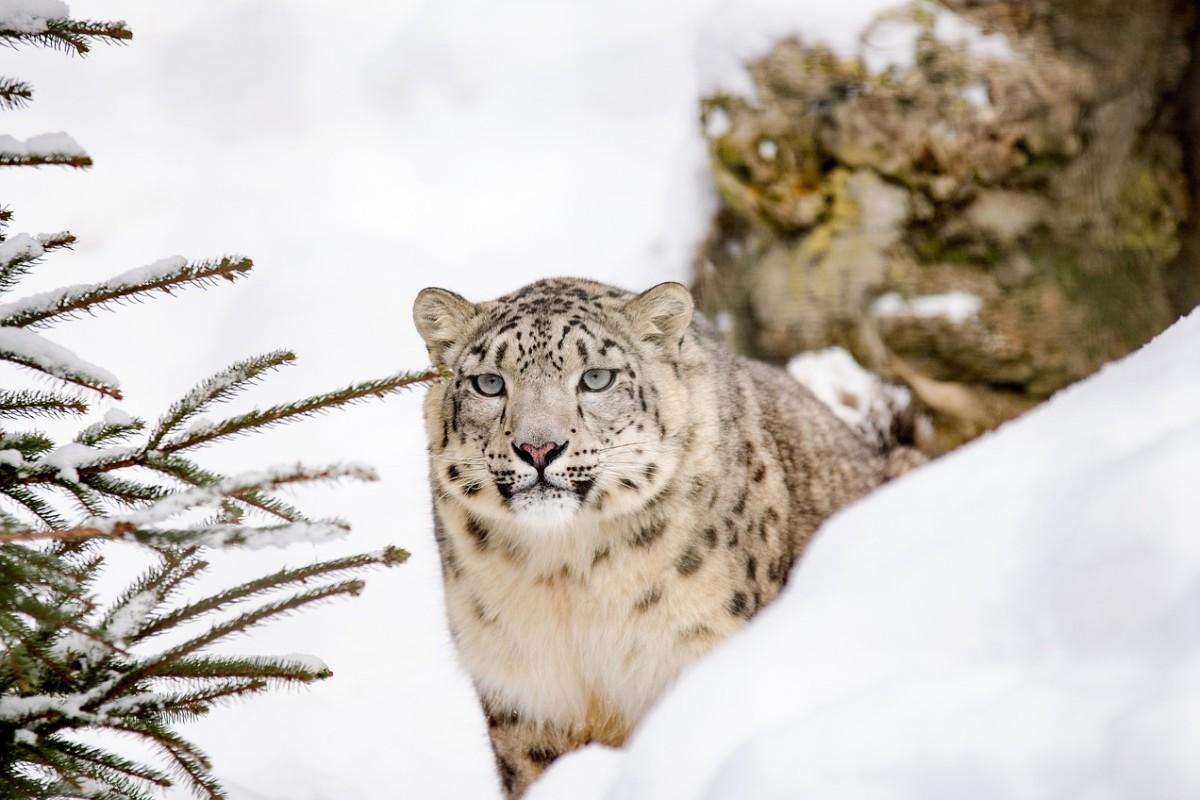
- Name: Snow leopard
- Scientific name: Panthera uncia
- Conservation status:
The snow leopard, also known as the ounce, is a beautiful and rare species of felid native to the mountains of Central and South Asia. Since there are fewer than 10,000 mature individuals in the wild, it is listed as vulnerable to extinction, and its main threats are poaching and habitat loss.
In Mongolia, this leopard can be found in the Mongolian and Gobi Altai Mountains, as well as the Khangai Mountains, in the central parts of the country.
2. Asiatic wild ass
- Name: Asiatic wild ass
- Scientific name: Equus hemionus
- Conservation status:
The Asiatic wild ass, also known as the hemione or the onager, is a species of equid native to Asia. Believe it or not, it is one of the fastest mammals in the world, reaching speeds of about 64 km/h / 40 mph to 70 km/h / 43 mph!
This mammal lives in the deserts and arid regions of Mongolia and has a broad, black dorsal stripe bordered with white.
3. Przewalski’s horse
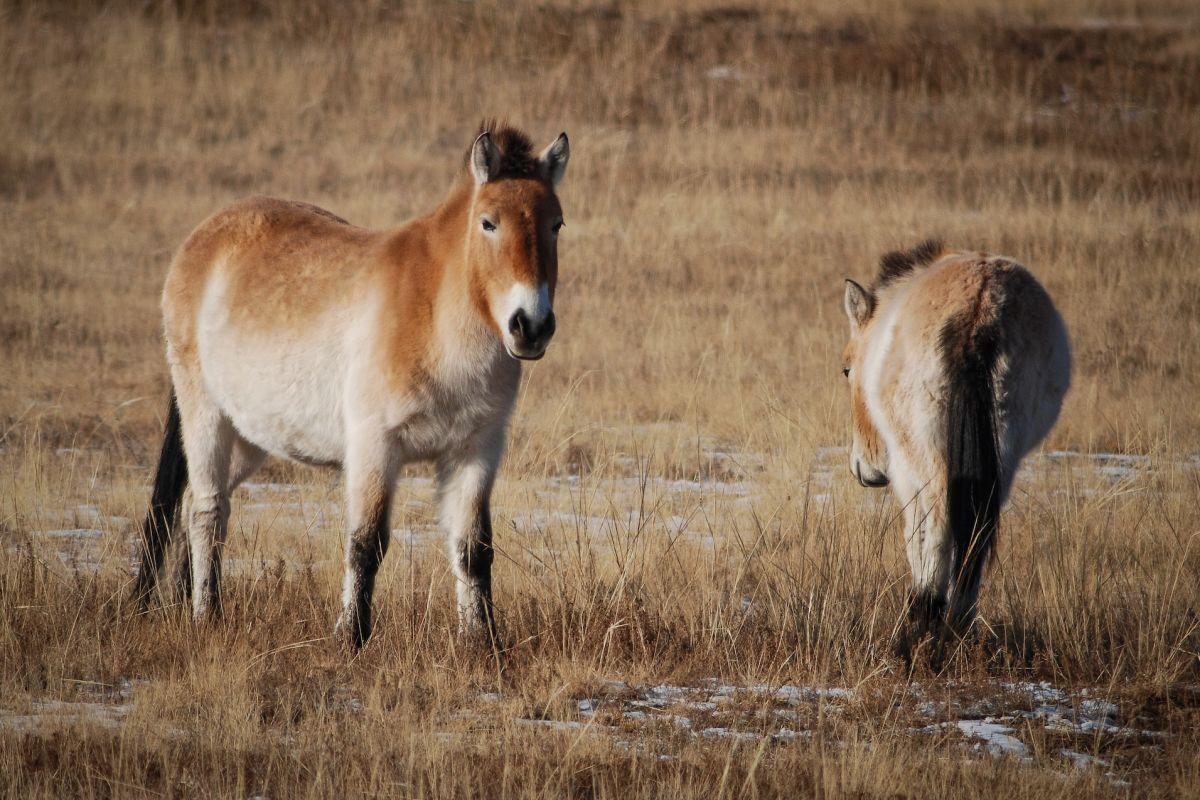
- Name: Przewalski’s horse
- Scientific name: Equus ferus przewalskii
- Conservation status:
Przewalski’s horse, also known as the Mongolian wild horse, the Dzungarian horse, or the takhi, is the main emblem of Mongolia and the national animal of the country. It is a stockily built species of wild horse that can be found in several national parks in Mongolia, such as the Khustain Nuruu National Park.
This horse mostly feeds on vegetation, which varies depending on the time of the year.
4. Saiga antelope
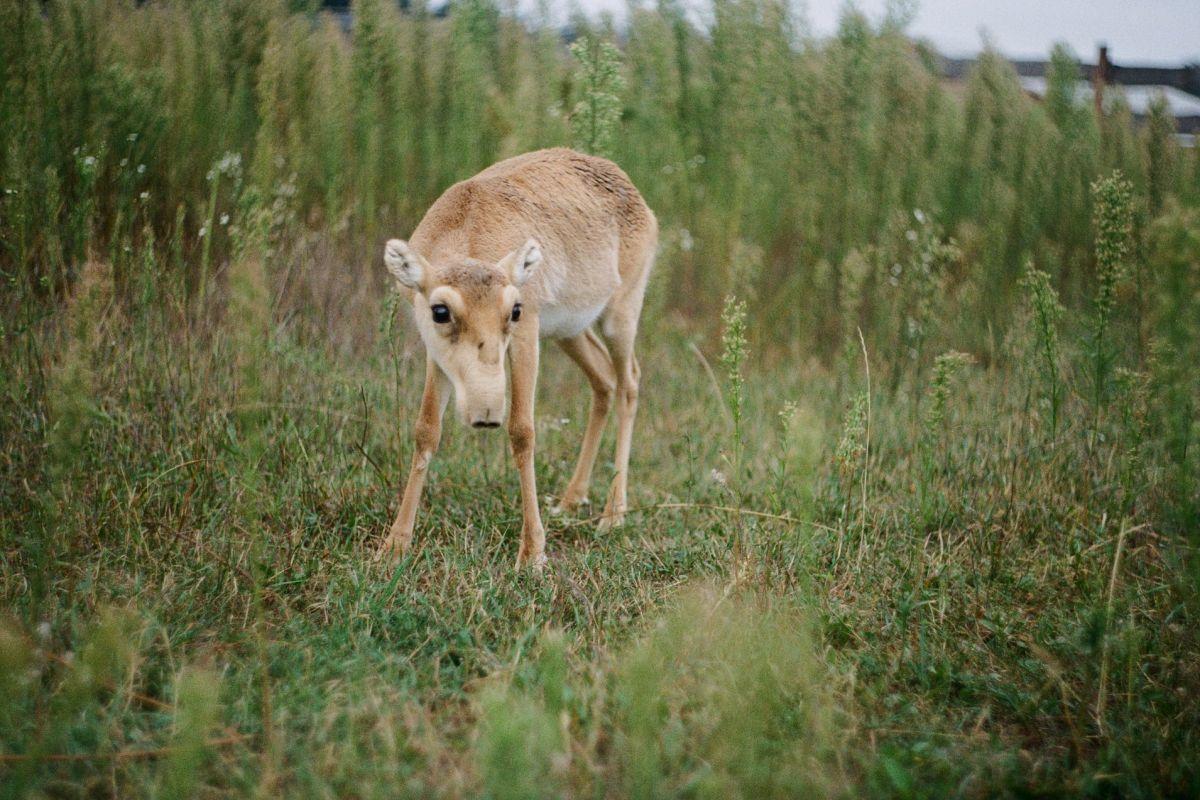
- Name: Saiga antelope
- Scientific name: Saiga tatarica
- Conservation status:
The saiga antelope, also simply known as the saiga, is a peculiar species of antelope, with a unique, broad trunk that serves as a nose. While it used to be widespread during antiquity, inhabiting much of the Eurasian steppes, it is now on the brink of extinction, mainly due to overhunting, poaching for its horns, climate change, and human expansion.
The Mongolian population of the saiga antelope underwent a drastic decline at the end of 2016 because of the goat plague.
5. Gobi bear
- Name: Gobi bear
- Scientific name: Ursus arctos gobiensis
- Conservation status:
The Gobi bear is one of the rarest subspecies of the brown bear on the planet, and it is endemic to the Gobi Desert of Mongolia, in the southern part of the country. There are most likely fewer than 40 individuals left in the wild. This dying subspecies has been protected since 1959 when hunting was declared prohibited.
The diet of this bear is mainly made of roots, plants, berries, and sometimes rodents.
6. Gray wolf
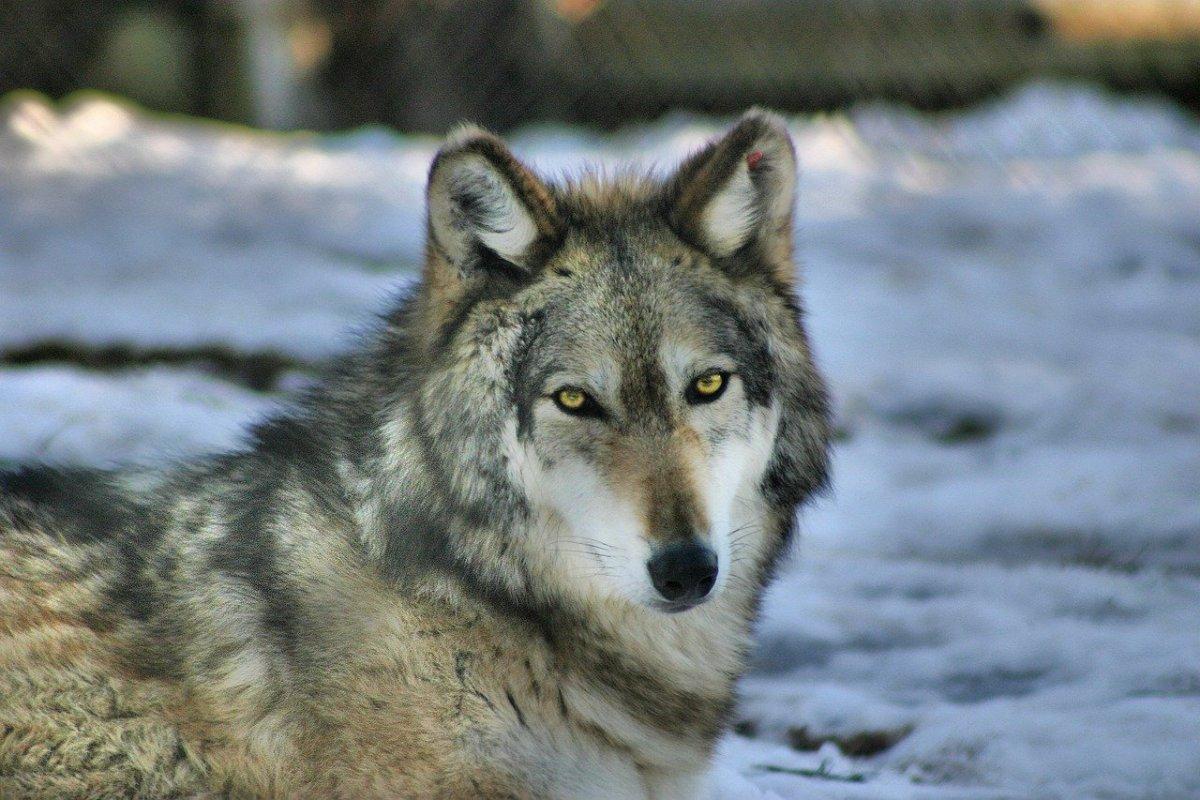
- Name: Gray wolf
- Scientific name: Canis lupus
- Conservation status:
The gray wolf, also simply known as the wolf, is one of the most common and widespread mammals on the planet. It has had an extremely long history of interactions with humans, sometimes feared for being a night hunter, sometimes despised for its attacks on domestic livestock.
In Mongolia, there are about 10,000 to 20,000 gray wolves, and their main targets are horses. In other countries, they usually attack deer, goats, turkeys, and cattle, depending on availability.
7. Wild Bactrian camel
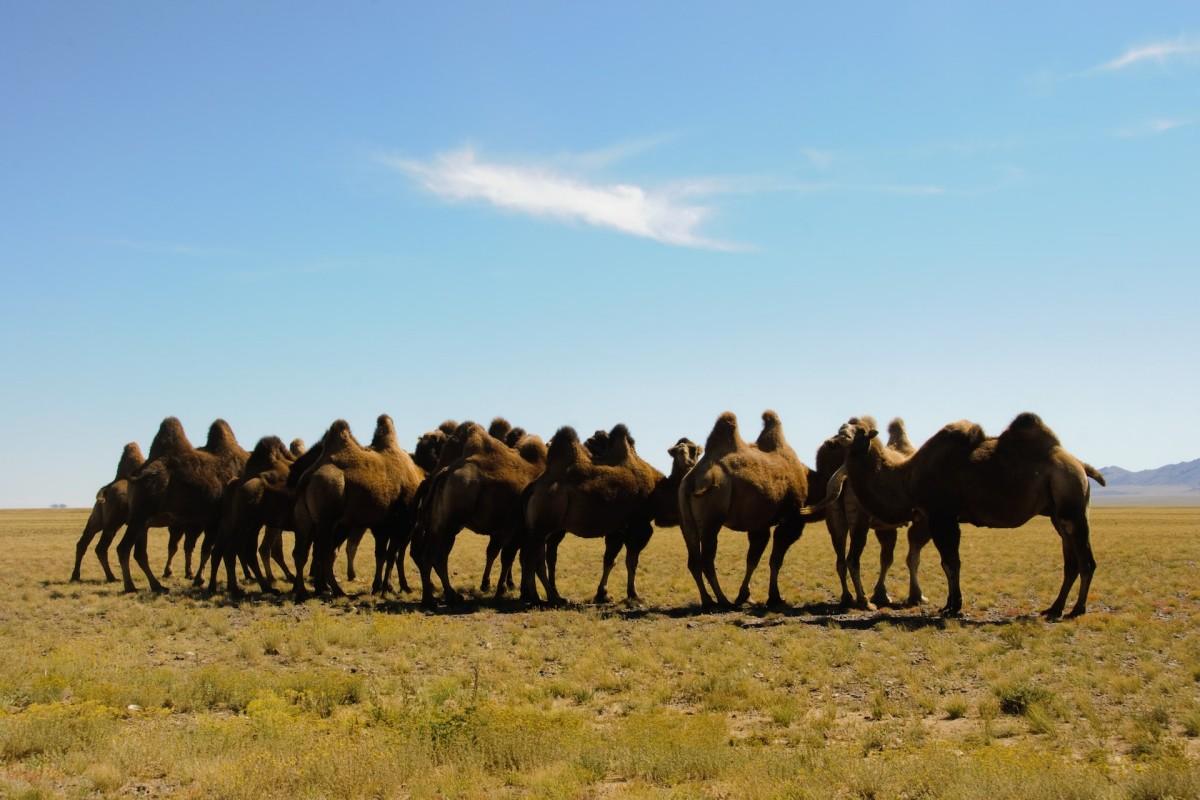
- Name: Wild Bactrian camel
- Scientific name: Camelus ferus
- Conservation status:
The Bactrian camel is one of the most common species of camel, and it has been largely domesticated. However, a different species exist, although much less numerous, and it is regrouped under the name wild Bactrian camel.
This camel species is on the brink of extinction, as there are fewer than 1,000 individuals living in the wild. Their populations are scattered across northwestern China and southern Mongolia.
8. Argali
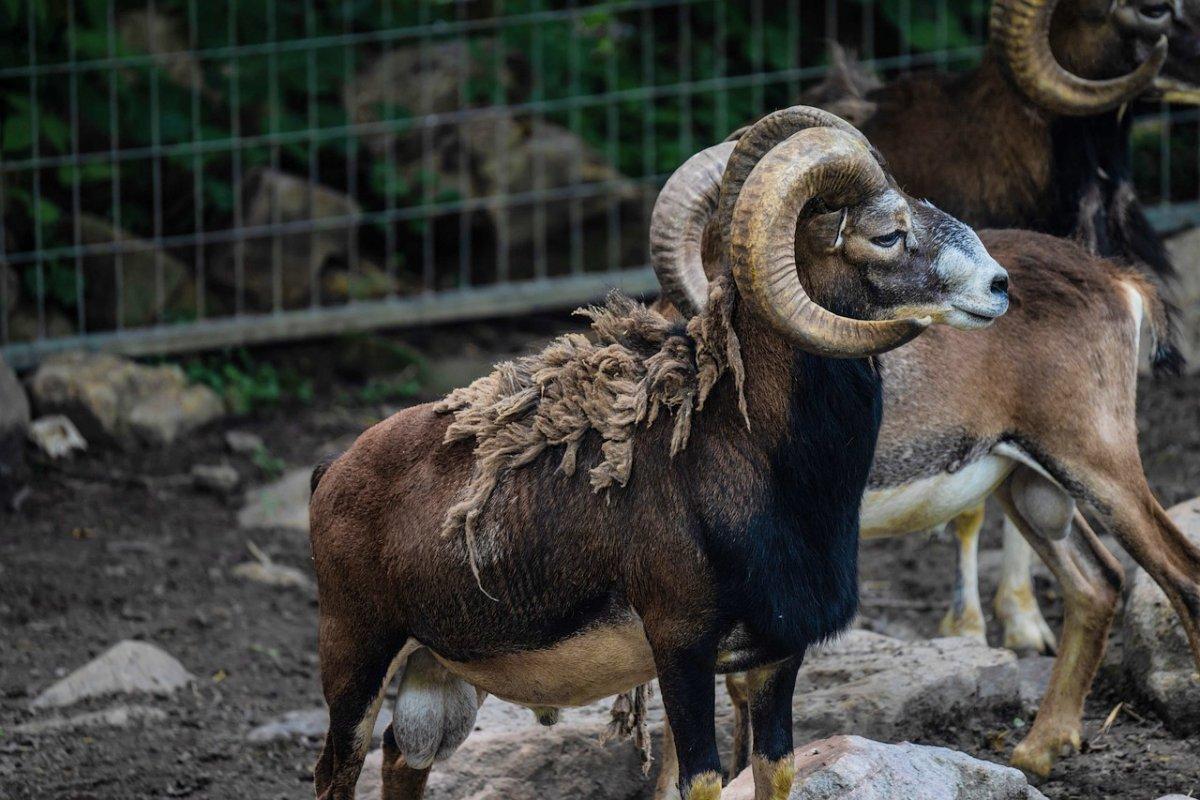
- Name: Argali
- Scientific name: Ovis ammon
- Conservation status:
The argali, also known as the mountain sheep, is a species of wild sheep native to the Altai Mountains (which partly cover Mongolia), the Himalayas, Tibet, and the western parts of East Asia.
It has been extirpated from some parts of Mongolia but is still present in others. Its main predators are snow leopards and gray wolves, as well as trophy hunting: some sources claim that the government of Mongolia retroactively granted Donald Trump Jr. a hunting permit for the beautiful, endangered ram that is the argali, which cost US taxpayers $76,859.
9. Corsac fox
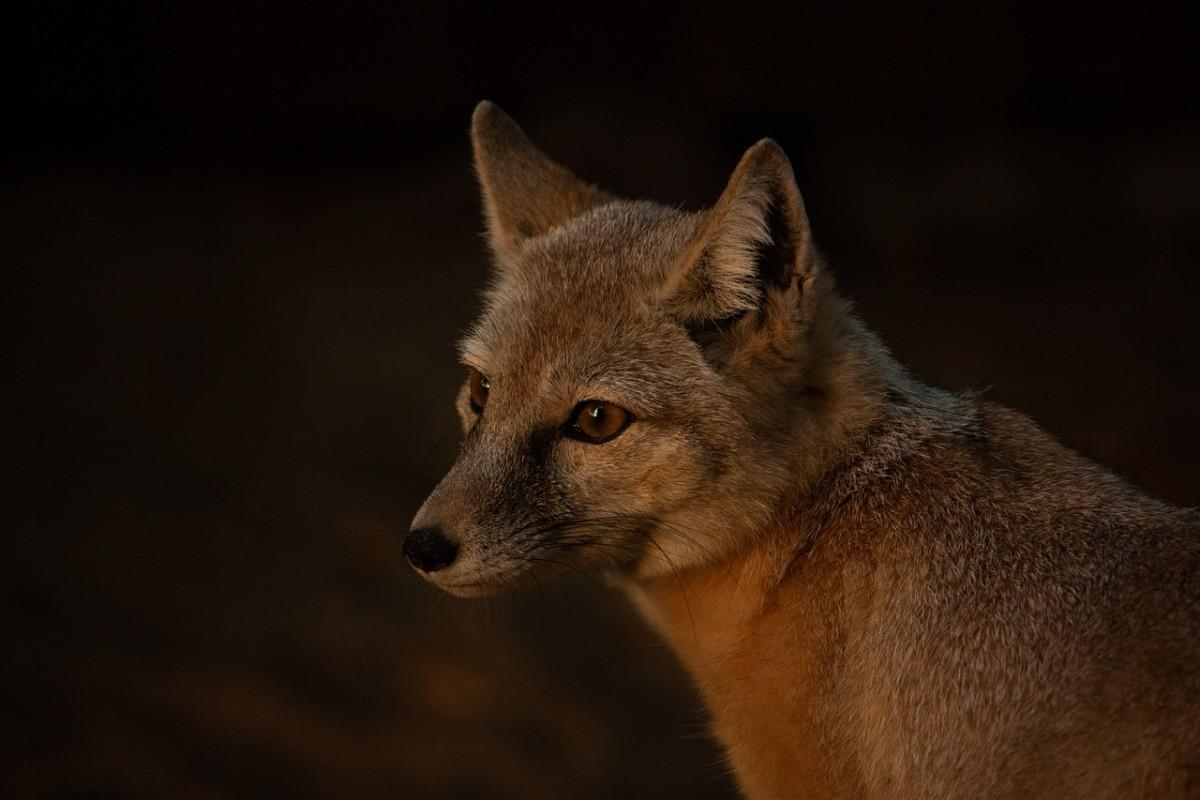
- Name: Corsac fox
- Scientific name: Vulpes corsac
- Conservation status:
The corsac fox, also known as the steppe fox or simply the corsac, is a medium-sized species of fox native to semi-deserts, deserts, and steppes of Central Asia, from Mongolia to northeastern Asia.
It is a unique species in the sense that its numbers greatly vary. And what I mean by that is that they can drop tenfold within a single year! Despite this, the corsac fox is still considered of least concern.
10. Goitered gazelle
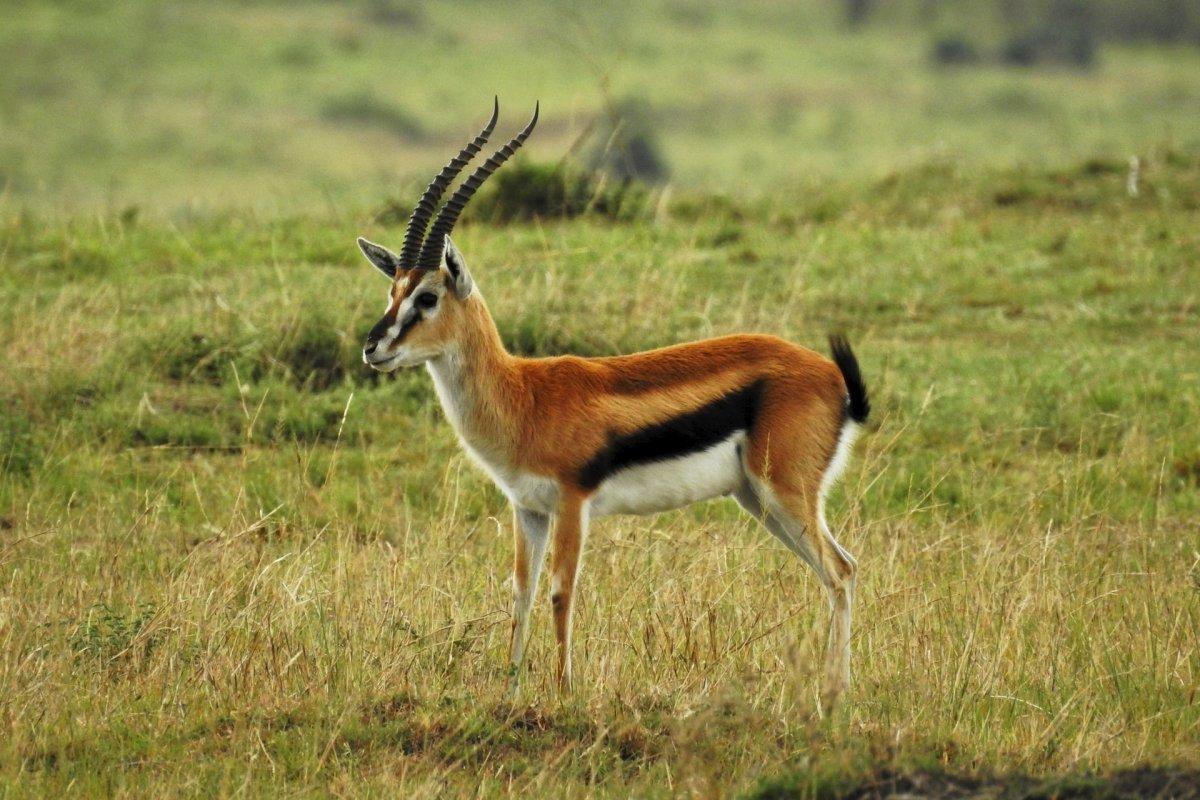
- Name: Goitered gazelle
- Scientific name: Gazella subgutturosa
- Conservation status:
The goitered gazelle, also known as the black-tailed gazelle, is a species of gazelle that can be found in the steppes of Mongolia, northwestern China, Georgia, Pakistan, Afghanistan, and Kazakhstan, among other countries. It inhabits sands and gravel plains, as well as limestone plateaus.
Its scientific name was given for the enlargement of the throat and neck of males during the mating season. A local Mongolian subpopulation is known as the Yarkand gazelle.
11. White-naped crane
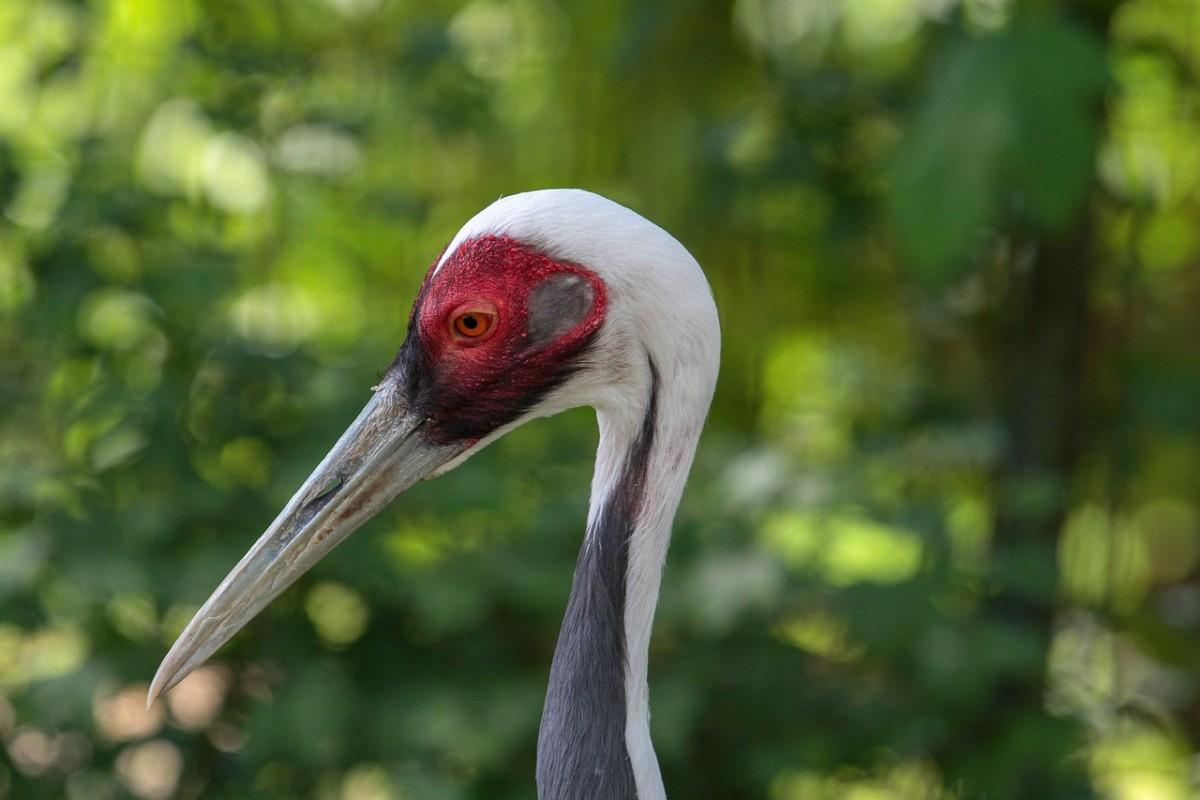
- Name: White-naped crane
- Scientific name: Antigone vipio
- Conservation status:
The white-naped crane, overall considered vulnerable to extinction, is locally critically endangered in Mongolia. It usually breeds in the northeastern parts of the country, as well as in southeastern Russia and northeastern China, and migrates to warmer areas such as Korea or Japan. Its diet is mainly made of seeds, insects, plants, roots, and small animals.
Although strictly protected in Mongolia, the white-naped crane seriously suffers from habitat loss and overhunting and is on the brink of local extinction.
12. Golden eagle

- Name: Golden eagle
- Scientific name: Aquila chrysaetos
- Conservation status:
The golden eagle is a large species of bird of prey native to much of the Northern Hemisphere. Its range is the widest one out of all eagles, and it is incredibly powerful and agile. Interestingly enough, it molts between March to September every year, and most feathers are replaced annually.
Some Russian subpopulations migrate to Mongolian steppes in the winter, while others such as the Kamchatkan golden eagle, also called the Siberian golden eagle, are native to Mongolia.
—
So there you have them, these were my 12 animals that live in Mongolia. I hope you enjoyed this list and that you learned something new today.
In case you want to learn more about Mongolia wildlife, feel free to keep reading, as I still have lots of things to tell you about:
Endangered Animals of Mongolia
This is definitely the saddest part of the list, but it is very important to raise awareness. Because of this, let’s go through the list of endangered animals in Mongolia.
Here are the animals in danger of extinction in Mongolia.
- None
- Baer’s pochard
- Sociable lapwing
- Bactrian camel
- Yellow-breasted bunting
- Saiga
- and 1 more…
- Steppe eagle
- Egyptian vulture
- Oriental stork
- Dhole
- Saker falcon
- and 7 more…
To see the full list of endangered species in Mongolia, head over to the International Union for Conservation of Nature’s Red List.
What is the National Animal of Mongolia?
The national animal of Mongolia is Przewalski’s horse.
Also known as the Mongolian wild horse, the takhi, or the Dzungarian horse, Przewalski’s horse is a rare species of wild horse native to the steppes of Central Asia. While it was once extinct in the wild, it has been reintroduced to its habitat since the 1990s, in places such as Khomiin Tal, Takhin Tal Nature Reserve, and the Khustain Nuruu National Park in Mongolia.
This horse’s history with humans dates back to 20,000 years ago when it was depicted in cave art, and it was domesticated as early as 6,000 years ago. It is a symbol of freedom and a unique Mongolian animal.
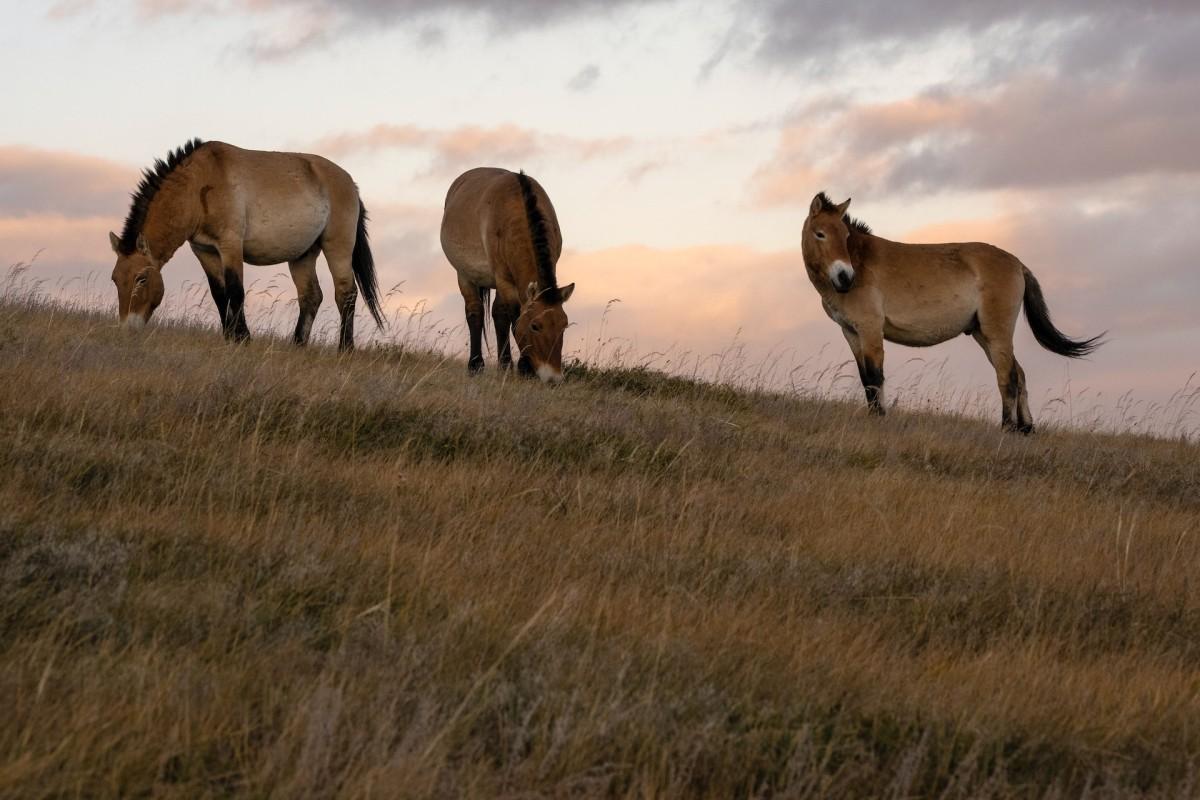
How Many Animals Native to Mongolia?
What is the diversity of native animals in Mongolia?
Let’s look at the total number of species of Chordata (mammals, birds, fishes, and reptiles).
Total number of animal species in Mongolia: 609 (7,035 in total in East Asia)
Why are there no deer in Mongolia?
The only deer that could be found in Mongolia was the musk deer, but it is now locally extinct, and there are no deer whatsoever in the country.
The main reasons for that are poaching, as well as illegal logging, and livestock guardian dogs. Despite the ban on hunting in 1953 in Mongolia, the musk deer was most likely hunted to extinction.
Are there pandas in Mongolia?
There are no pandas in the wild in Mongolia, as this species is confined to some small areas of eastern China; while its range used to be much wider, its populations are now scattered and isolated.
However, 2 giant panda sisters joined a Mongolian zoo in 2016, in Ordos Safari. They now live in special villas of about 3,200 m² / 34,444 sq ft.
More About Animals in the World!
Loved these Mongolia animal facts? Want to see what animals live in other countries?
Then check out these posts:
Or click here to see ALL the facts up on the blog! Spoiler alert: there’s A LOT of them.
Share the knowledge! Click on the buttons below to share information about the wildlife of Mongolia with your friends, and help them learn more about the world 🙂
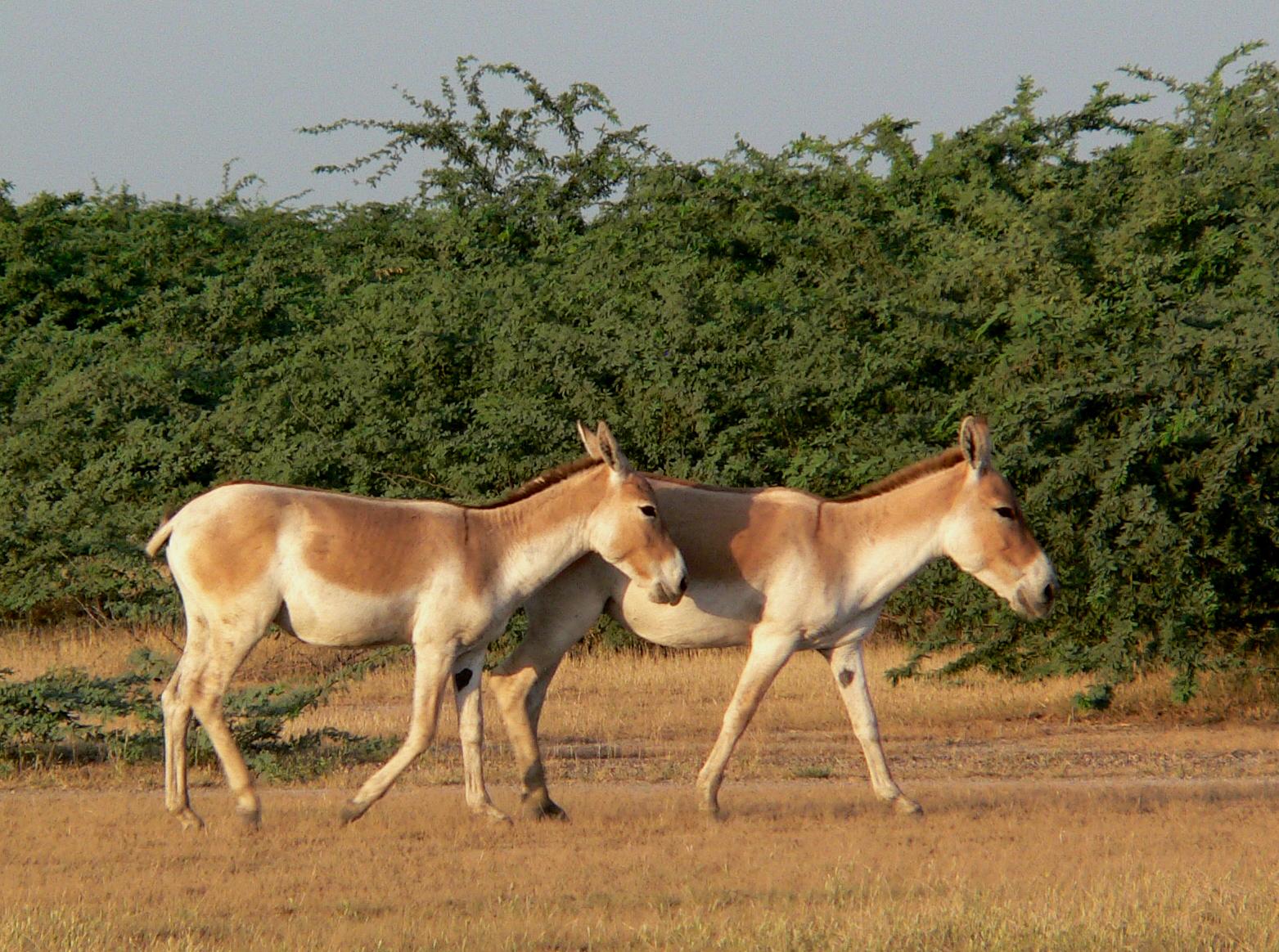

![13 Wild Animals in Somalia [Wildlife in Somalia]](https://www.kevmrc.com/wp-content/uploads/2022/12/13-wild-animals-in-somalia.jpg)
![21 Wild Animals in Bulgaria [Wildlife in Bulgaria]](https://www.kevmrc.com/wp-content/uploads/2022/06/21-wild-animals-in-bulgaria.jpg)
![18 Wild Animals in Jamaica [Wildlife in Jamaica]](https://www.kevmrc.com/wp-content/uploads/2022/08/18-wild-animals-in-jamaica.jpg)